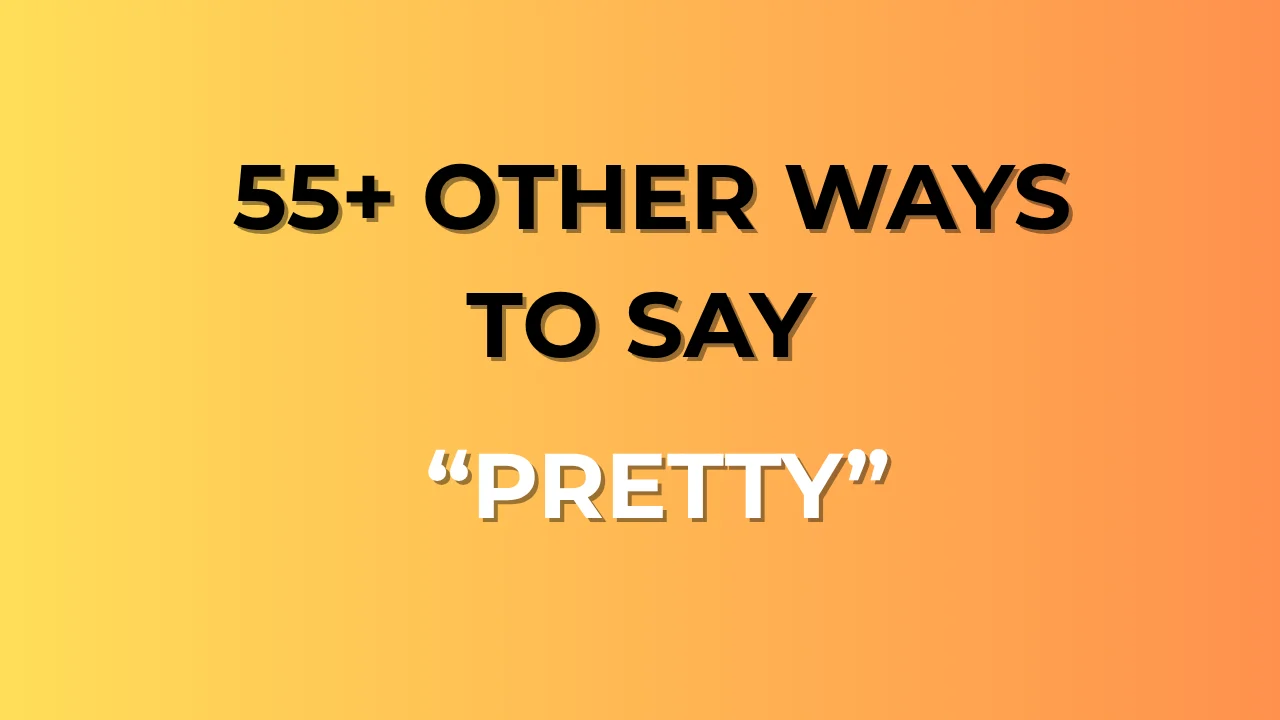In essays, literature analyses, and research papers, the phrase “This quote shows” is used constantly to explain or interpret evidence. While it serves its purpose, overusing it can make your writing sound repetitive or simplistic. In academic or professional writing, variety adds sophistication — showing deeper understanding and confidence in your argument.
Choosing smarter, more expressive alternatives to “This quote shows” helps you clearly connect ideas, explain meaning, and maintain a polished academic tone. Whether you’re analyzing a text, referencing a source, or writing a critical essay, the right phrasing can strengthen your analysis and impress readers.
This guide offers 30+ thoughtful, precise, and professional alternatives to “This quote shows,” complete with meanings, tones, and examples — perfect for students, educators, and writers who want to elevate their expression.
What Does “This Quote Shows” Mean?
The phrase “This quote shows” is used to introduce an explanation of evidence, often in essays, literary analyses, or academic papers. It connects a quotation to your interpretation, demonstrating what the quote reveals about a character, idea, or theme.
Example: This quote shows how the protagonist values freedom over security.
Its tone is neutral and explanatory, but it can sound too direct or repetitive in formal writing — especially if used frequently in analytical paragraphs.
When to Use It
You typically use “This quote shows” when:
- Interpreting literary or textual evidence.
- Supporting a claim in an essay.
- Explaining data, testimony, or references.
Examples:
- This quote shows the author’s belief in equality.
- This quote shows how fear drives decision-making.
While perfectly correct, you can replace it with more nuanced academic alternatives to make your writing engaging and sophisticated.
Is It Polite or Professional?
Yes “This quote shows” is grammatically correct and polite, but it’s too basic for advanced or formal writing. In academic or professional contexts, using alternatives such as “This quotation illustrates” or “The passage reveals” conveys deeper analysis and maturity.
Refining your phrasing signals that you understand not just the text, but also the art of analytical communication.
30+ Other Ways to Say “This Quote Shows”
1. This Quotation Illustrates
Meaning: The quote provides a clear example of something.
Tone: Academic and formal.
Example: This quotation illustrates the narrator’s struggle with identity.
Use: Excellent for essays and literature analyses.
2. This Passage Demonstrates
Meaning: Indicates proof or evidence from the text.
Tone: Scholarly and precise.
Example: This passage demonstrates the tension between love and duty.
Use: Perfect for analytical or research writing.
3. This Excerpt Reveals
Meaning: Highlights hidden or deeper meaning.
Tone: Insightful and interpretive.
Example: This excerpt reveals the character’s internal conflict.
Use: Great for literature and close reading.
4. This Line Suggests
Meaning: Implies or hints at an idea without stating it directly.
Tone: Thoughtful and analytical.
Example: This line suggests that power often leads to corruption.
Use: Works well in interpretive writing.
5. This Quote Illustrates
Meaning: Provides an example supporting your argument.
Tone: Academic and neutral.
Example: This quote illustrates the theme of resilience.
Use: Simple and clear for essays.
6. This Statement Emphasizes
Meaning: Highlights or reinforces a specific point.
Tone: Strong and focused.
Example: This statement emphasizes the importance of unity.
Use: Ideal for persuasive or analytical writing.
7. This Evidence Indicates
Meaning: Refers to proof supporting your claim.
Tone: Formal and analytical.
Example: This evidence indicates that the author values independence.
Use: Perfect for research-based essays.
8. This Passage Highlights
Meaning: Draws attention to a significant idea.
Tone: Professional and academic.
Example: This passage highlights the imbalance of power in society.
Use: Good for essays and literature commentary.
9. This Extract Reflects
Meaning: Shows how the text mirrors a larger idea or theme.
Tone: Formal and reflective.
Example: This extract reflects the author’s critique of modern values.
Use: Great for literature or historical context.
10. This Line Demonstrates
Meaning: Provides evidence of a concept or theme.
Tone: Analytical and objective.
Example: This line demonstrates how fear shapes the protagonist’s choices.
Use: Strong choice for analytical writing.
11. This Example Portrays
Meaning: Depicts or shows an idea vividly.
Tone: Descriptive and interpretive.
Example: This example portrays the loneliness of the main character.
Use: Works well in creative or narrative analysis.
12. This Quotation Underscores
Meaning: Stresses an important idea.
Tone: Formal and persuasive.
Example: This quotation underscores the author’s belief in justice.
Use: Excellent for persuasive essays or discussions.
13. This Passage Conveys
Meaning: Communicates a feeling or idea effectively.
Tone: Academic and expressive.
Example: This passage conveys the despair of the oppressed group.
Use: Great for emotional or thematic analysis.
14. This Text Demonstrates
Meaning: Provides textual proof of an idea.
Tone: Formal and factual.
Example: This text demonstrates how ambition drives human behavior.
Use: Common in research or academic writing.
15. This Section Depicts
Meaning: Describes something vividly or visually.
Tone: Descriptive and analytical.
Example: This section depicts the chaos of war through imagery.
Use: Effective for descriptive literary analysis.
16. This Evidence Reveals
Meaning: Exposes or uncovers meaning.
Tone: Scholarly and confident.
Example: This evidence reveals the hypocrisy of the ruling class.
Use: Suitable for argumentative essays.
17. This Quotation Suggests
Meaning: Implies a conclusion based on context.
Tone: Thoughtful and interpretive.
Example: This quotation suggests that freedom comes at a cost.
Use: Ideal for nuanced interpretation.
18. This Passage Implies
Meaning: Hints at a subtle or underlying meaning.
Tone: Analytical and careful.
Example: This passage implies that happiness is a human construct.
Use: Excellent for advanced analysis.
19. This Line Reflects
Meaning: Mirrors or represents a broader theme.
Tone: Academic and reflective.
Example: This line reflects society’s obsession with perfection.
Use: Great for essays and commentaries.
20. This Example Demonstrates
Meaning: Shows proof through an instance.
Tone: Clear and professional.
Example: This example demonstrates the consequences of greed.
Use: Perfect for essays or arguments.
21. This Passage Symbolizes
Meaning: Shows symbolic representation of ideas.
Tone: Literary and interpretive.
Example: This passage symbolizes rebirth and transformation.
Use: Great for symbolism and theme essays.
22. This Quote Captures
Meaning: Encapsulates a concept or feeling.
Tone: Expressive and literary.
Example: This quote captures the essence of human struggle.
Use: Effective in creative analysis.
23. This Extract Demonstrates
Meaning: Provides concrete evidence.
Tone: Academic and neutral.
Example: This extract demonstrates how loyalty is tested.
Use: Ideal for essays and studies.
24. This Example Highlights
Meaning: Emphasizes a key detail or message.
Tone: Formal and balanced.
Example: This example highlights the irony in the author’s message.
Use: Excellent for commentary writing.
25. This Line Reveals
Meaning: Exposes truth or meaning.
Tone: Objective and interpretive.
Example: This line reveals the protagonist’s hidden motives.
Use: Simple yet effective for analytical essays.
26. This Passage Represents
Meaning: Stands as an example of a larger concept.
Tone: Academic and symbolic.
Example: This passage represents the clash between tradition and progress.
Use: Excellent for thematic essays.
27. This Statement Reflects
Meaning: Shows an attitude or belief.
Tone: Academic and factual.
Example: This statement reflects the character’s moral struggle.
Use: Common in critical writing.
28. This Segment Emphasizes
Meaning: Draws attention to an important point.
Tone: Strong and formal.
Example: This segment emphasizes the fragility of human hope.
Use: Suitable for literary analysis.
29. This Quotation Reveals
Meaning: Brings to light something significant.
Tone: Analytical and refined.
Example: This quotation reveals the underlying theme of redemption.
Use: Perfect for advanced essays.
30. This Passage Exemplifies
Meaning: Serves as a prime example.
Tone: Academic and persuasive.
Example: This passage exemplifies the author’s use of irony.
Use: Great for critical evaluations.
Conclusion
Replacing “This quote shows” with richer alternatives adds depth, precision, and sophistication to your writing. These phrases not only enhance clarity but also help you present interpretations confidently.
Whether you’re writing a literature essay, analyzing a speech, or crafting a research paper, these expressions demonstrate linguistic maturity and academic professionalism.
Use them intentionally to elevate your analysis and impress your readers with well-structured, insightful commentary.



